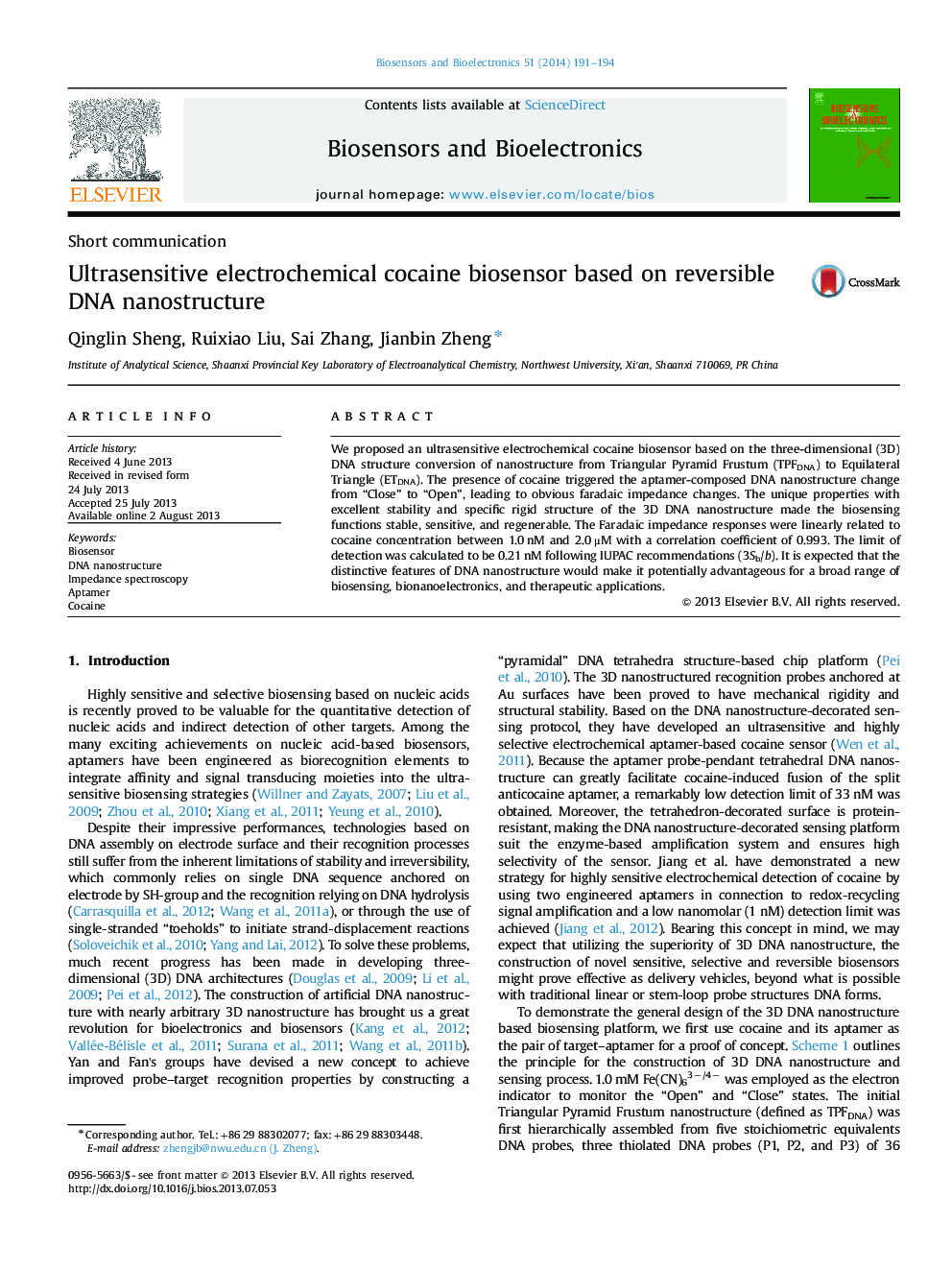| Article ID | Journal | Published Year | Pages | File Type |
|---|---|---|---|---|
| 866599 | Biosensors and Bioelectronics | 2014 | 4 Pages |
•A sensitive DNA nanostructure-based electrochemical biosensor for cocaine was established.•The sensor featured stable, sensitive, and regenerable functions.•Linear detection of cocaine ranged from 1.0 nM to 2.0 μM with LOD at 0.21 nM.•This strategy is applicable to other analytes with a suitable anti-target DNA, RNA aptamers or peptides.
We proposed an ultrasensitive electrochemical cocaine biosensor based on the three-dimensional (3D) DNA structure conversion of nanostructure from Triangular Pyramid Frustum (TPFDNA) to Equilateral Triangle (ETDNA). The presence of cocaine triggered the aptamer-composed DNA nanostructure change from “Close” to “Open”, leading to obvious faradaic impedance changes. The unique properties with excellent stability and specific rigid structure of the 3D DNA nanostructure made the biosensing functions stable, sensitive, and regenerable. The Faradaic impedance responses were linearly related to cocaine concentration between 1.0 nM and 2.0 μM with a correlation coefficient of 0.993. The limit of detection was calculated to be 0.21 nM following IUPAC recommendations (3Sb/b). It is expected that the distinctive features of DNA nanostructure would make it potentially advantageous for a broad range of biosensing, bionanoelectronics, and therapeutic applications.
